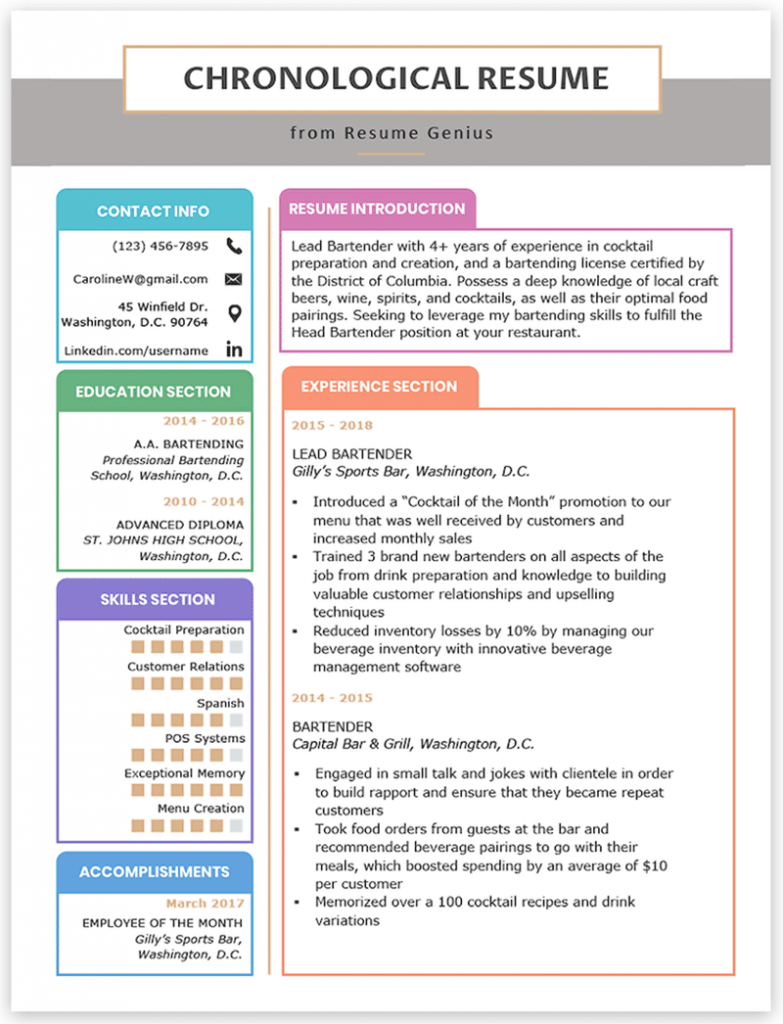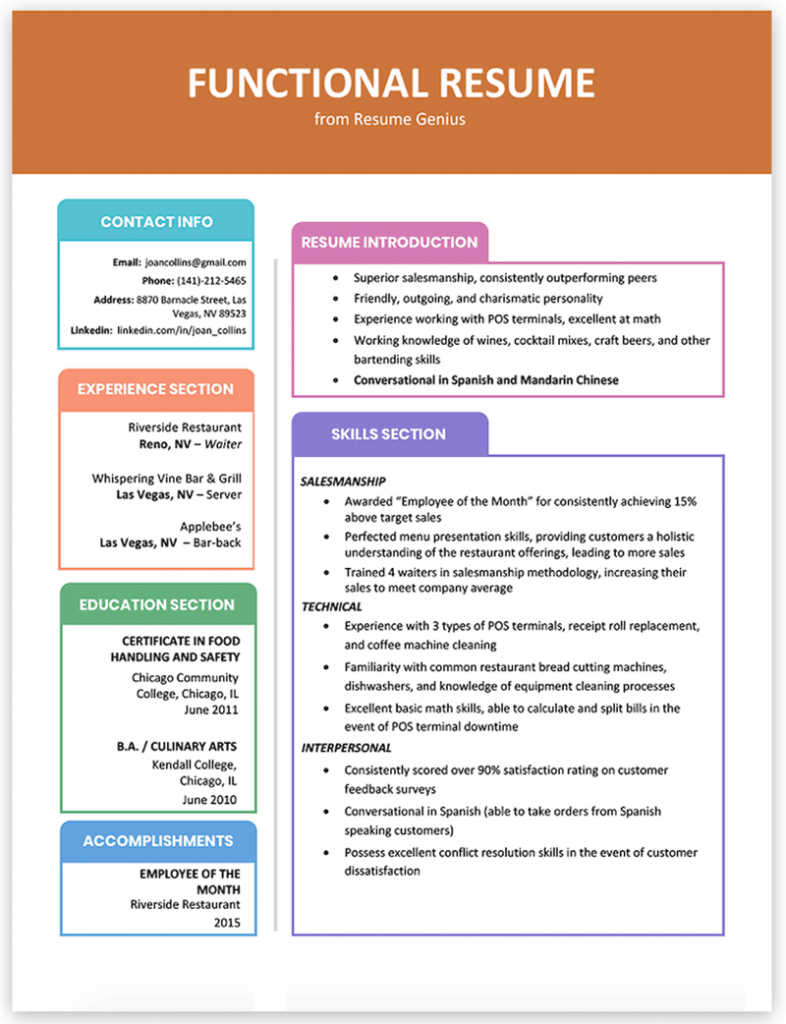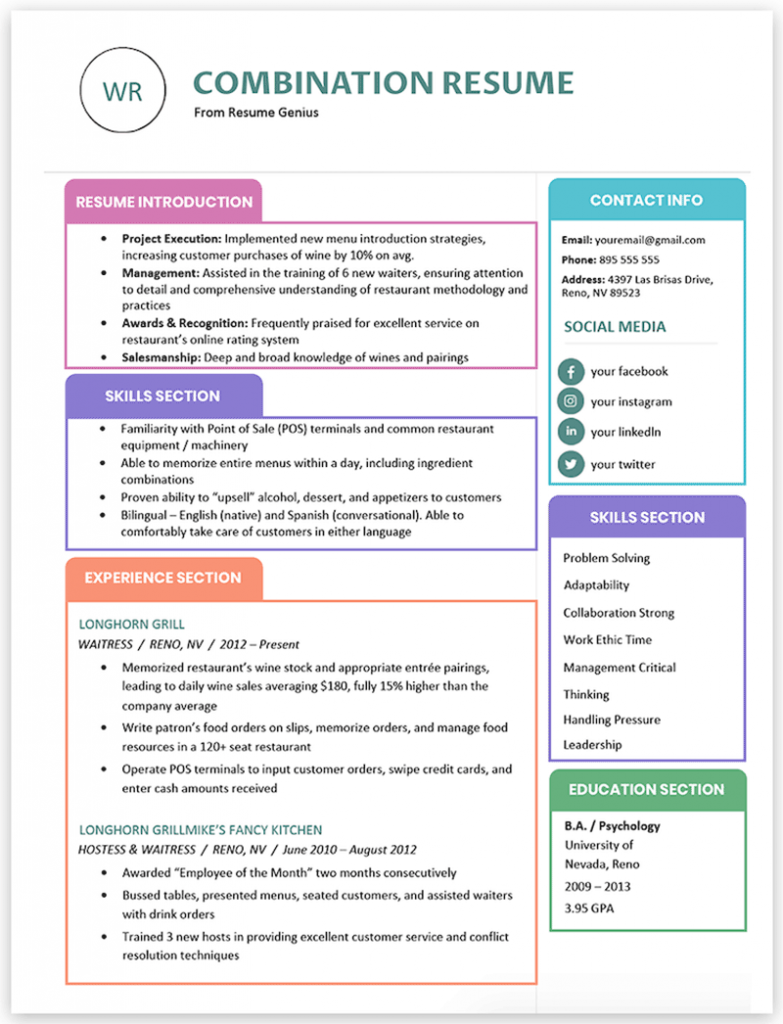When writing resumes there are often 3 main formats to consider
- Chronological
- Functional
- Combination
The following page will explain and give examples of each resume. Choose a format that will best display your skills, qualifications, and work history.
Chronological
What is a Chronological Format:
Chronological resumes are one of the most common resumes amongst job seekers. Often this is the resume format that is thought of most often when one hears the word “resume.” This format outlines your work history in a ladder type progression with the most recent employment located at the top. With chronological resumes your work history will be the central focus
When to Use This Format:
This format is most useful for individuals that have experience in the field in which they are applying for. This is also a good format if you want to show your progression within a specific field and your past abilities that may aid you in gaining the position.
When to Avoid This Format:
If you have large work history gaps or change jobs often. This format does a poor job at masking these issues. This may also not be a great resume format to utilize if you have little or no experience in the field in which you are applying for.

Functional
What is a Functional Format:
A functional resume focuses on your skills and experience rather than on your work history. This resume format allows a job seeker to place emphasis on skills and accomplishments in order of importance rather than on order of occurrence. It is important to remember when writing a functional resume that it is separated by category not by time. For example rather than an accumulative section for work history you may have a section for each skill you can offer.
When to Use This Format:
When changing careers a job seeker may wish to feature skills and accomplishments that are not used in current positions. This format can also be used if wanting to highlight skills developed outside of current work either perhaps through school or volunteer experience. If you have a gap in employment that you would rather de-emphasize this format can be useful. Functional formats are also useful if you would like to customize your resume to the job you are seeking.
When to Avoid This Format:
It is important to remember that functional format resumes can be more difficult to read for employers. They may not also be as widely accepted as chronological formats. Its important to ensure that the benefit of using an functional format outweighs the risk that may be involved if an employer has a difficult time decoding.

Combination
What is a Combination Format:
Combination resumes incorporates the best of chronological and functional resume formats. Combination resumes generally begin with a listing of skills or qualifications followed by work history. This format allows you to state your most relevant qualifications up front, while providing the employment timeline that many hiring managers like to see.
When to Use This Format:
This format can be productive for students, new graduates, and entry level job seekers. This option is also a good fit for those that are making small career changes or older workers that have an extensive work history but still feel the need to sell their strongest credentials first.
When to Avoid This Format:
Because this format still includes a chronological work history section you may want to avoid If you have large work history gaps or change jobs often. This format also may not be ideal if you have unrelated experience to the position as this will be more apparent than it would be in a functional resume.

